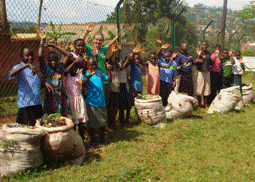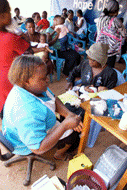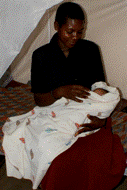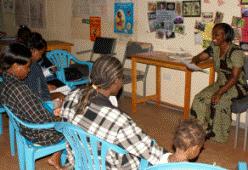Lukuli's
population is growing - as is demand for our services
The UNFPA
2011 report on the state of midwifery in Uganda
notes a theoretical total fertility rate of over 6 whereas
Europe, Asia and the Americas are all 3 or less. Estimates
for Makindye set the population at 400,000 up from 299,000
in the 2001 Census. At Hope Clinic, we now delivery 15-20
babies per month. The huge concern we have is that there
are so many babies that are being delivered and that women
did not deliver in a health unit, and perhaps did not
have enough ANC checks, nor an HIV test for her and the
baby's safety. We now understand that the government staffed
facility that is 3 miles away by road is closed at night
and at weekends for maternity services.
 |
  |
 |
| Less space means
starting sack gardens |
Many women, many babies, every
week |
Mothers hear how spacing help
them |
We
have been helped by Aggreko International to reduce the
financial barriers through their sponsoring
of a midwife's cost of employment, and by DFCU banking
group donating Mama
kits so that each mother saves the Shs 10,000 cost
of gloves, cotton wool and other items. These are needed
wherever she eventually delivers.
The
rapid population growth, and far slower expansion of government
staffed health units has led the Makindye local council
and Hope Clinic to plan a public private partnership whereby
the costs for ANC, deliveries and child immunisation that
would normally be charged to the patient will be borne
by the council so that the services are free of charge
to the patients. The removal of user fees at government
sites greatly helped access to services, but the nearest
government site, at Kiruddu, is 5km away by road. We hope
to expand to over 100 deliveries per month.
In
2010/11 the Belgian Development Agency (BTC) provided
a grant of Euro 5,000 through which we have replaced older
maternity instruments, bought a new steriliser and improved
the diagnostic tools and machines including a foetal scope
and ambu-bag for clearing the baby's airway.